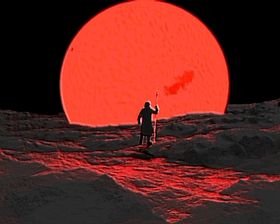Template:Pictorial-Islam-options: Difference between revisions
| [checked revision] | [checked revision] |
mNo edit summary |
mNo edit summary |
||
| Line 66: | Line 66: | ||
<option weight="1">{{Pictorial-Islam|1=Health Effects of Islamic Dress|2=[[File: | <option weight="1">{{Pictorial-Islam|1=Health Effects of Islamic Dress|2=[[File:Burqa9.jpg|320px|link=Health Effects of Islamic Dress]]|3=Female Islamic dress ranges anywhere from wearing a simple head covering, to the burqa (a form of "full hijab"), which covers almost all exposed skin. There is concern among the medical community about some of the health effects of the extreme styles of Islamic dress, with the main issues arising from Vitamin D deficiency due to lack skin exposed to UV light. It has been established by credible scientific evidence that almost all women who observe the full hijab are chronically deficient in Vitamin D. Vitamin D is a vital nutrient and deficiency of this kind can lead to osteomalacia in adults and rickets in children. There is also a strong association between deficiency in Vitamin D and an increased risk of developing several deadly cancers, including breast cancer. ([[Health Effects of Islamic Dress|''read more'']])}}</option> | ||
There is concern among the medical community about some of the health effects of the extreme styles of Islamic dress, with the main issues arising from Vitamin D deficiency due to lack skin exposed to UV light. It has been established by credible scientific evidence that almost all women who observe the full hijab are chronically deficient in Vitamin D. Vitamin D is a vital nutrient and deficiency of this kind can lead to osteomalacia in adults and rickets in children. There is also a strong association between deficiency in Vitamin D and an increased risk of developing several deadly cancers, including breast cancer. ([[Health Effects of Islamic Dress|''read more'']])}}</option> | |||
Revision as of 12:45, 31 July 2013
Also see: Template:Pictorial-Islam
|
